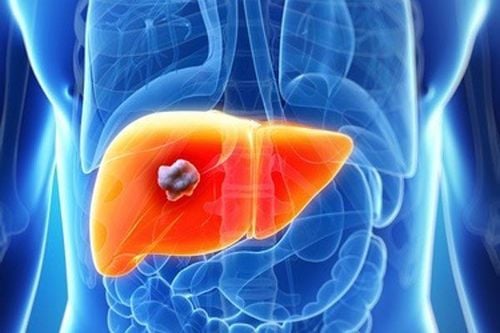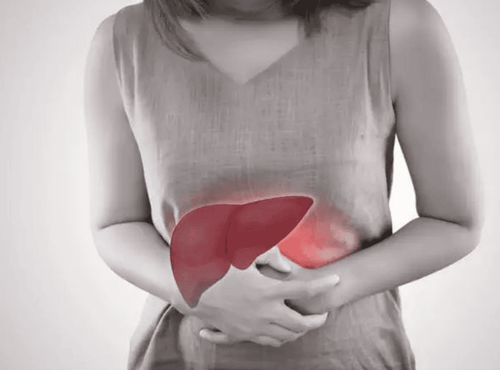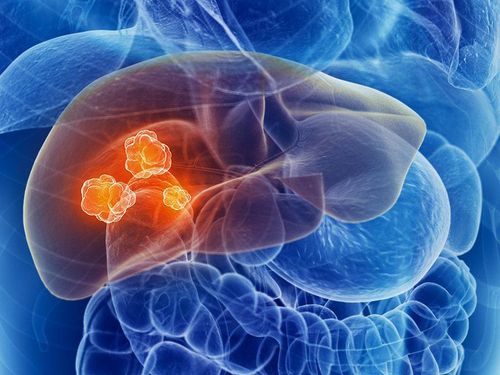This is an automatically translated article.
Article by Dr. Tran Thi Phuong Thuy - Hepatobiliary specialist - Department of General Internal Medicine - Vinmec Times City International Hospital
Liver abscess caused by amoeba is a common infection and causes dangerous complications. If not treated promptly, amoebic liver abscess can lead to death for the patient.
1. What is amoebic liver abscess?
Amoebic liver abscess is a purulent inflammation in the liver caused by an intestinal parasite called the amoeba, whose scientific name is Entamoeba histolytica.
Amoeba, after entering the body, often causes intestinal inflammation, also known as amoebic dysentery. People with amoebic dysentery often have symptoms such as abdominal cramps, straining, diarrhea with mucus and blood in the stool. After causing enteritis, the amoeba can spread through the bloodstream to reach the liver, thereby causing amoebic liver abscess.
The route of transmission of amoeba parasites is from food or drinking water that has been contaminated by the feces of an infected person (may occur from using the feces of an infected person to irrigate crops). Amoebic dysentery can also be transmitted by person-to-person contact, most commonly in densely populated areas with poor sanitation, and with high frequency in Vietnam as well.
Some risk factors for getting an amebic liver abscess include:
Living in or traveling to tropical areas Alcoholism Cancer Cancer Immunodeficiency (including HIV/AIDS) Poor nutrition Old age Yes Pregnancy Taking steroids
2. Amoebic liver abscess symptoms
May or may not have symptoms of intestinal infection, but when a patient has amoebic liver abscess, the following symptoms may be present:
Abdominal pain, especially in the right lower quadrant, severe pain , continuous or stabbing Cough Fever and chills Non-bloody diarrhea (appears only in 1/3 of patients) Fatigue, sluggishness Intermittent hiccups (rare) Jaundice (yellowing of the skin, mucous membranes and skin) eyes, eyes) Loss of appetite Sweating Weight loss

3. Examination and testing
Your doctor will examine you and ask you some questions about your symptoms and travel history.
Your doctor may order some tests:
Blood count Liver function test Blood or stool test to detect amoeba Abdominal ultrasound Computed tomography or magnetic resonance imaging of the abdomen Aspiration of pus of liver abscess to detect bacteria and parasites.
4. Treatment of amoebic liver abscess
Take medicine: Usually use antibiotics such as Metronidazole or Tinidazole if there is amoebic liver abscess. In addition, once the liver abscess has been removed, it should be combined with a drug to remove the amoeba remaining in the intestinal lumen to help prevent recurrence, such as paromomycin or diloxanide. A small number of cases require aspiration drainage or surgery to remove the abscess to relieve abdominal pain and increase the likelihood of successful treatment.
5. Complications and prognosis
Without treatment, the liver abscess can rupture and spread to other organs, leading to death. The abscess may rupture into the abdomen, lungs, pleura, or pericardium. Amoebic infections can also spread to the brain.
If treated, the chance of cure is very high and only a very small number of cases have complications.
In summary, amoebic liver abscess is a dangerous condition caused by an amoeba intestinal parasite that causes purulent inflammation in the liver. Therefore, to prevent disease, when going to areas with poor sanitation, it is necessary to drink filtered water and not eat raw vegetables or peeled fruits.
Please dial HOTLINE for more information or register for an appointment HERE. Download MyVinmec app to make appointments faster and to manage your bookings easily.














